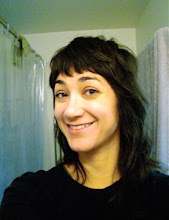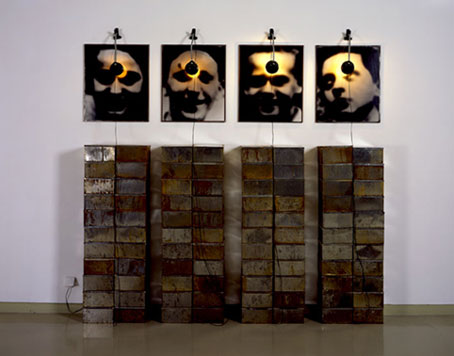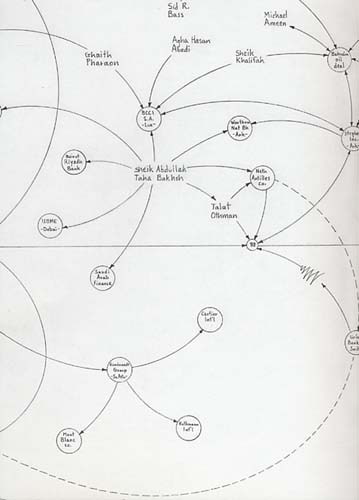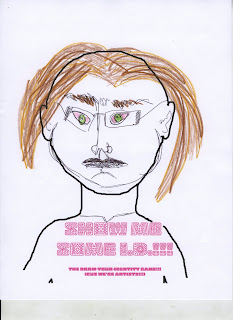
Friday, April 23, 2010
Art and Globalism

Zwelethu Mthethwa, Image Info

Mark Lombardi, Image Info
1. Does the 'art world' really exist? If it is just shorthand fo the experience of going to openings and selling art and knowing certain people etc., then who is 'stricken by geopolitical anxiety'?
2. Is the art world just a business world? Or a private club? Is it really about art at all?
2. Does this mean Globalism just doesn't suit the people who already have money and power?
3.Which comes first the chicken or the egg? Is the art world following globalism, or is globalism making us more aware of more of the globe, and the artists and people therein?
4. Why doesn't music need a music world to exist? Or poetry need a poetry world?
5. A culture is said to need a mythology that can accommodate the changes the people are undergoing. What is arts role in relation to this need?
Art and Abstraction
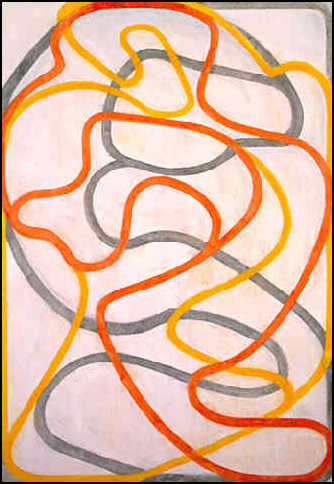
Brice Marden, Image Info
Thomas Nozkowski, Image Info

Terry Winters, Image Info
1. Is Agnes Martin's work really reminiscent of the moon, or is that the author's association?
2. Did abstraction really all start with Pollock?
Art and Nature and Technology

Rebecca Horn, Image Info


Andy Goldsworthy, Image Info
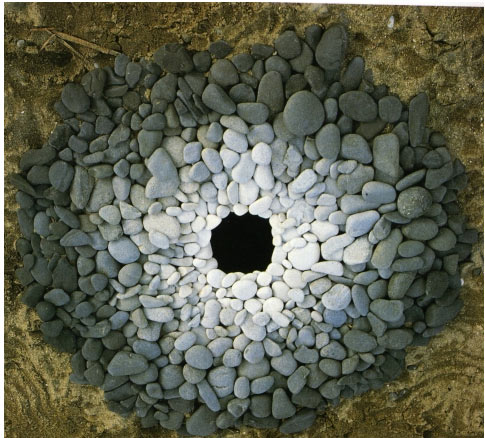

Andy Goldsworthy, Image Info
1. It strikes me that the greatest danger in making permanent choices that have not evolved slowly out of nature may be that we will only have ourselves to blame when the negative aspects of the changes occur.
2. What about the socioeconomic repercussions of being able to buy special skills or attributes, to what degree do we already suffer from those repercussions today/
3. What if we considered the 'tampering' with the nature to be a grey question that must be answered case by case in terms of possible harm and possible gain? I read in an interview with the Dalai Lama that when he was asked whether animal testing for medicines was right or wrong that, rather than making a blanket right or wrong decision, he would have to consider instead each case and how many lives those testing animals would save.
The Quotidian Object

Doris Salcido, Image Info

Tara Donovan, Image Info


Cornelia Parker, Image Info



Sara Lucas, Image Info

Barbara Kruger, Image Source
1.Given the immense influence of the readymade on sculpture, can it be said that its largest influence has been on the use of photographs? Or does the intangiblility of the photograph make it relate less to the term readymade than objects do, simply because they exist in space?
2.Is the theory of fetish use only related to castration, or other types of trauma as well?
3. Does an aesthetic experience have to be pleasurable
4. What does Iverson mean by disinterested? Disinterested in what? Is interest simply something that sustains our attention?
5.Does the readymade really imply disinterest in aesthetics? Or is its effort towards pointing to a different aesthetic than the traditional?
Monday, April 19, 2010
Saturday, April 17, 2010
Art and the Body

Renee Cox
image info

Kara Walker
image info

Jenny Saville
image info

Zhang Huan
image info
1. Is our attraction to the grotesque partly because of our repulsion?
2. Are artists our modern day 'tricksters,' confronting our communities with what they may not want to think or see?
3. I question whether we find things that enter or exit the body grotesque because they somehow invade our concrete sense of self. Maybe they also remind us of infirmity, old age and death.
4. When does the grotesque become not grotesque? When we identify with it?
5. In the same way we consider what comes and goes in and out of our orifices as grotesque because it reminds us of our transience or death, do we find the sexual grotesque in general?
Art and Identity
1.Is Identity a construct or is it inherent?
Viewing the work of Nikki S. Lee makes me think it is both a construct and inherent. She becomes an Ohioan, a lesbian, a swinger, a punk rocker and more, but she stays Korean. Maybe our ethnic identity is inherent. Maybe our age, too.
2.Who do we imagine the mythic Artist is now? Do we have a myth analagous to the 'genius' or 'social outcast'?
One newer 'type' of artist may be the Young Savvy Artist- she/he is young, stylish, smart, computer savvy- i don't know if it's a myth or not, but I don't know if that sort of internationally cool young person artist type existed before television and the internet? Or if that is a new sort of archtype that came from the Young Brits. Although, there was the New York School, they were young and cool, but all men.
3.What is identity?
Webster's Dictionary:
Etymology: Middle French identité, from Late Latin identitat-, identitas, probably from Latin identidem repeatedly, contraction of idem et idem, literally, same and same
Date: 1570
1 a : sameness of essential or generic character in different instances b : sameness in all that constitutes the objective reality of a thing : oneness
2 a : the distinguishing character or personality of an individual : individuality b : the relation established by psychological identification
3 : the condition of being the same with something described or asserted
4.Who decides our identity?
I think the best one can do is attempt to influence the label you may get, but in the end people are labeled from the outside. However, a label may not be your true identity-certainly it isn't. I don't know if one decides one's own identity or some of it is predestined- the color of skin, unless your micheal jackson, your age, etc.
5.How have the influences Nochlin lists in the last paragraph changed since 1971?
"the situation of art making"- it's global now. information super highway. television has greatly expanded.
art academies- in my experiences at 3 universities,there is a majority of women studying the arts
systems of patronage-
mythologies-

Nikki S. Lee
image info

Gran Fury
image info

Gran Fury
image info

Mary Kelly
image info

Robert Colescott
image info

Pepin Osorio
image info

Kerry James Marshall
image info
Viewing the work of Nikki S. Lee makes me think it is both a construct and inherent. She becomes an Ohioan, a lesbian, a swinger, a punk rocker and more, but she stays Korean. Maybe our ethnic identity is inherent. Maybe our age, too.
2.Who do we imagine the mythic Artist is now? Do we have a myth analagous to the 'genius' or 'social outcast'?
One newer 'type' of artist may be the Young Savvy Artist- she/he is young, stylish, smart, computer savvy- i don't know if it's a myth or not, but I don't know if that sort of internationally cool young person artist type existed before television and the internet? Or if that is a new sort of archtype that came from the Young Brits. Although, there was the New York School, they were young and cool, but all men.
3.What is identity?
Webster's Dictionary:
Etymology: Middle French identité, from Late Latin identitat-, identitas, probably from Latin identidem repeatedly, contraction of idem et idem, literally, same and same
Date: 1570
1 a : sameness of essential or generic character in different instances b : sameness in all that constitutes the objective reality of a thing : oneness
2 a : the distinguishing character or personality of an individual : individuality b : the relation established by psychological identification
3 : the condition of being the same with something described or asserted
4.Who decides our identity?
I think the best one can do is attempt to influence the label you may get, but in the end people are labeled from the outside. However, a label may not be your true identity-certainly it isn't. I don't know if one decides one's own identity or some of it is predestined- the color of skin, unless your micheal jackson, your age, etc.
5.How have the influences Nochlin lists in the last paragraph changed since 1971?
"the situation of art making"- it's global now. information super highway. television has greatly expanded.
art academies- in my experiences at 3 universities,there is a majority of women studying the arts
systems of patronage-
mythologies-

Nikki S. Lee
image info

Gran Fury
image info

Gran Fury
image info

Mary Kelly
image info

Robert Colescott
image info
Pepin Osorio
image info

Kerry James Marshall
image info
Tuesday, April 6, 2010
Subscribe to:
Posts (Atom)

